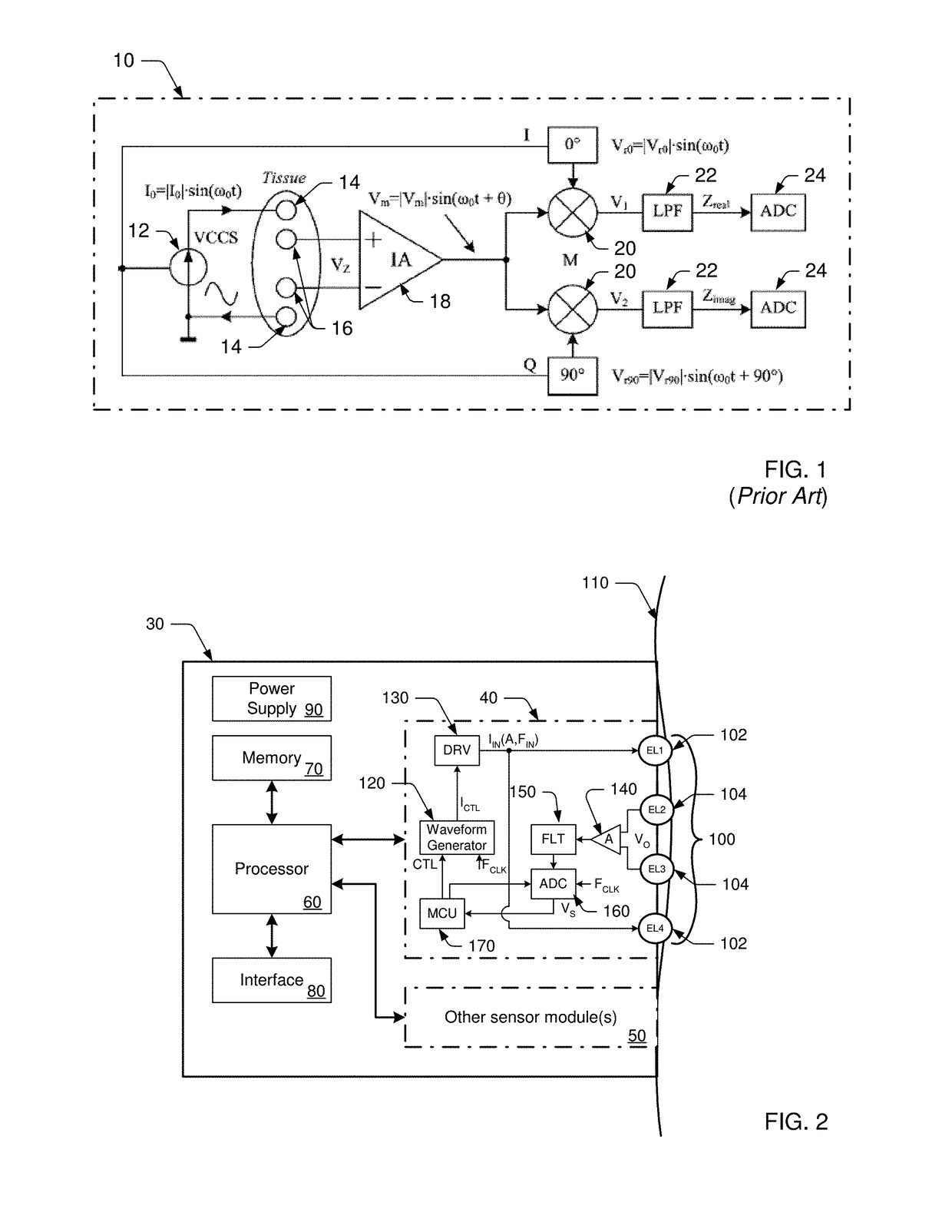Synchronous Detection Circuit And Method For Determining A Bio-Impedance Of A Biological Tissue
a bio-impedance and detection circuit technology, applied in the field of low energy, can solve the problems of reducing the accuracy of bio-impedance measurement, large phase errors, and large power consumption, and achieve the effects of low power consumption, high efficiency, and high accuracy and measurement reliability
- Summary
- Abstract
- Description
- Claims
- Application Information
AI Technical Summary
Benefits of technology
Problems solved by technology
Method used
Image
Examples
Embodiment Construction
[0024]In general, the present disclosure is directed to synchronous detection circuits and methods for extracting magnitude and phase information from a waveform. Embodiments of the disclosed circuits and methods may be broadly used for extracting such information from substantially any amplitude and / or phase modulated signal. According to one embodiment, the disclosed circuits and methods may be used for extracting magnitude and phase information from a bio-impedance waveform. Regardless of application or use, the embodiments of synchronous detection circuits and methods disclosed herein provide a low power, low cost synchronous detection circuit, which demonstrates greater accuracy and measurement reliability than many currently available solutions.
[0025]According to one embodiment, the present disclosure may be directed to biometric monitoring devices, which are typically (although not exclusively) designed to be worn by a user continuously, intermittently or during certain activ...
PUM
 Login to View More
Login to View More Abstract
Description
Claims
Application Information
 Login to View More
Login to View More - R&D
- Intellectual Property
- Life Sciences
- Materials
- Tech Scout
- Unparalleled Data Quality
- Higher Quality Content
- 60% Fewer Hallucinations
Browse by: Latest US Patents, China's latest patents, Technical Efficacy Thesaurus, Application Domain, Technology Topic, Popular Technical Reports.
© 2025 PatSnap. All rights reserved.Legal|Privacy policy|Modern Slavery Act Transparency Statement|Sitemap|About US| Contact US: help@patsnap.com



